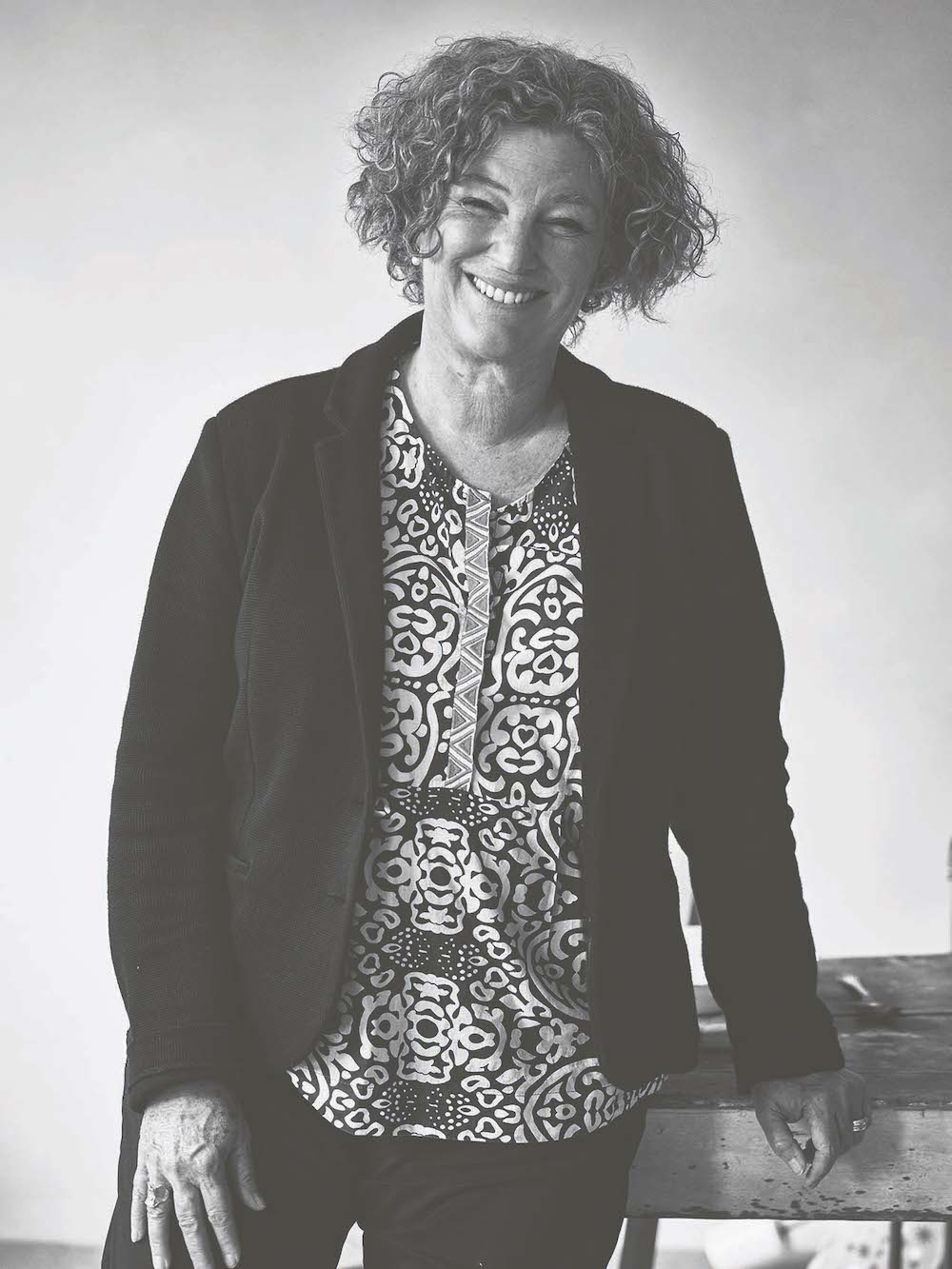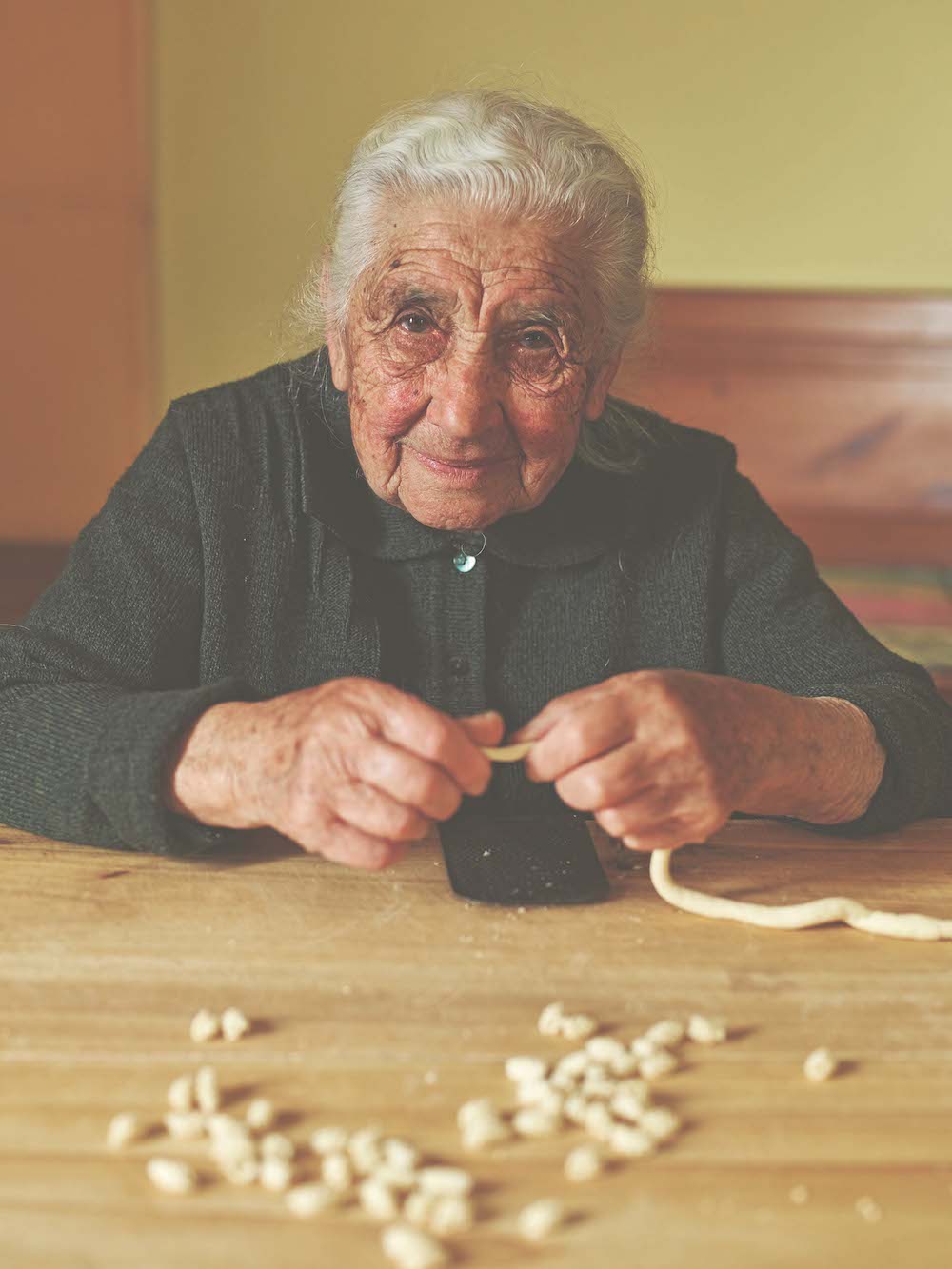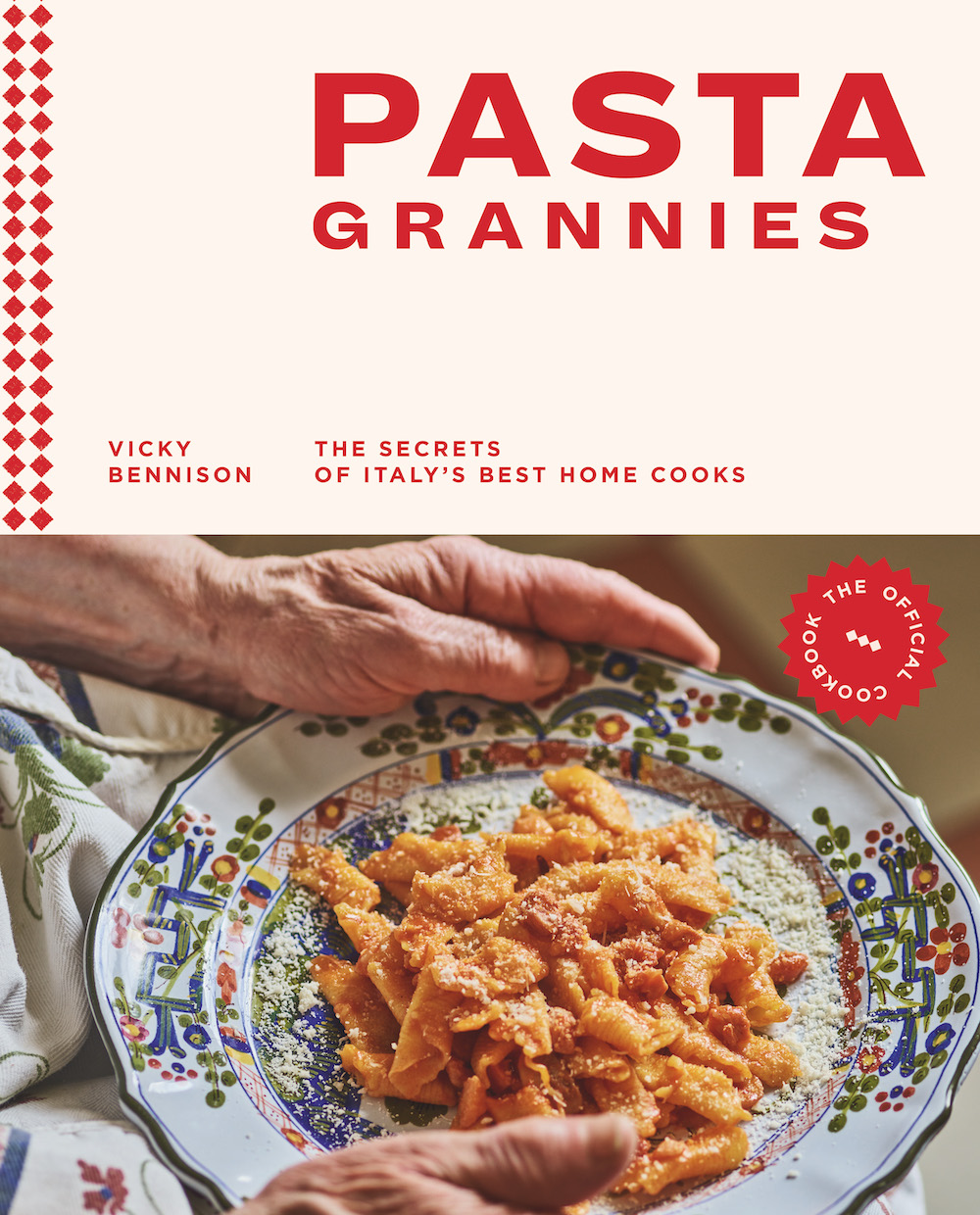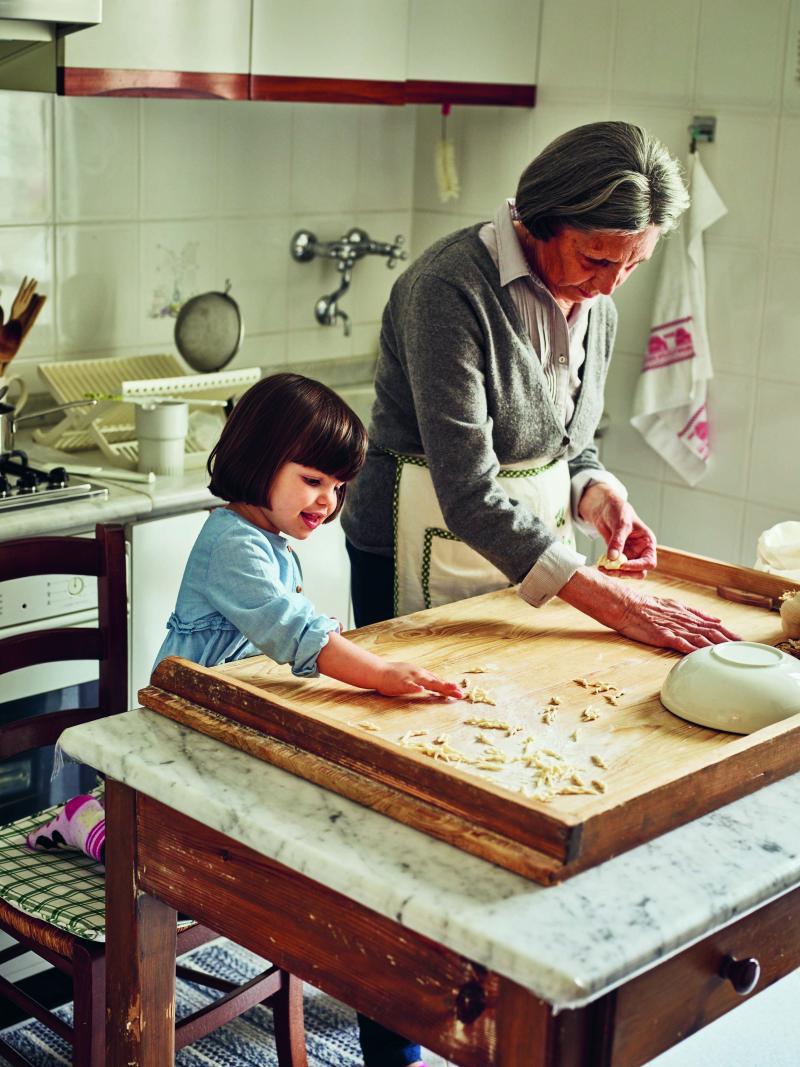Since 2014, Pasta Grannies has introduced the world to 250 nonne from Italy and the diaspora. Through YouTube, they show off their skills making pasta by hand, honed over decades of cooking for friends and family. The channel has gone on to be profiled in the likes of the New York Times and the Guardian, and October 2019 saw the release of ‘Pasta Grannies: The Official Cookbook.’
Italy Magazine spoke to Pasta Grannies’ British creator, Vicky Bennison.
You divide your time between the UK and Le Marche. How did you first find yourself in Italy?
I had a flat in Chiswick, London, and I wanted a bigger kitchen – a grown-up kitchen – and the only way I could afford that was by going somewhere cheaper. Le Marche was very cheap at that time, so I bought a schoolhouse with great views of the Sibillini mountains. That’s how I ended up in Italy. That was 15 years ago. I didn’t think it was going to be forever. At that time, I’d only written about Spanish cookery, so it was a bit of a new thing to go to Italy.

Le Marche is a place that a lot of non-Italians don’t hear much about compared to the likes of Tuscany or Emilia-Romagna. What’s special about Le Marche?
People always say it’s the new Tuscany, although they’ve been saying that for 15 years! The great thing is that it doesn’t have a major draw like Siena or Florence, so it remains unspoilt, and it’s astonishingly beautiful. You get a great range of scenery: it’s got lovely beaches, Sirolo, the Sibellinis – and of course great wines!
Italy is all beautiful. One of the things about Pasta Grannies is that we don’t get into tourist areas. We’re always down country roads and hills that people don’t go to, and it’s all fantastic. I’ve never been disappointed by anywhere.
Your background is in international development. On the face of it, this is a big career change! Can you see any common themes between your previous career and Pasta Grannies?
Well, food writing is something I did in tandem with consulting for a while, so it was a late-career change, if you like. The similarities are… very few! But I’m interested more in the people than the home economics end of it. I’m more into food anthropology, which is where it overlaps with sustainable development. Although it doesn’t usually translate into the actual episodes, the issues around sustainable, artisanal food production are never far from my mind.
Pasta Grannies has been going for over five years and has close to half a million subscribers. What about it do you think makes it so successful?
People love pasta, that’s one thing. But I think they love grandmothers even more. And it’s quite a calming, soothing thing to watch in times of uncertainty. It’s important to respect the grandmothers, so there’s a zero-tolerance policy on nasty comments and it’s a safe space. You don’t say anything online that you wouldn’t say to your own grandmother – if you say something horrid, you need your mouth washing out! I hear a lot of people saying it reminds them of their own grandmothers, even if they didn’t cook.
Are there any unique challenges working with these subjects?
Yes, there are! I have a granny finder. She’s called Livia de Giovanni and she’s from Faenza. It’s very important to have an Italian to do the persuading. And you need to have a connection. In the first instance you’re usually dealing with relatives and friends of the women as gatekeepers, then the grandmother herself. That’s the two-stage process, so by the time we walk down to their front door everyone is clear that it’s okay.
Sometimes, they decide they’re feeling ill or there’s a death in the family – we’ll be a day away and they’ll change their minds. But the majority say yes. And I think they enjoy the newness of it. When we do film them, it’s not like telly with big cameras and lights. That undoubtedly translates into the rough-and-ready, just-found look and feel of the films. We try to make it more like a conversation; I’m chatting to them, Livia’s chatting to them, Andrea the cameraman – who’s Italian too – is chatting to them. It’s just like hosting people who’ve dropped by, not directors shouting “Action!”
So even though you speak Italian, you have a team who comes along with you? Some of the accents and dialects of the grannies are quite hard to understand…
Sometimes I don’t understand a word of what they’re saying! Also I can’t operate a camera and speak Italian at the same time. Everyone will have got very bored by the time I’ve constructed a sentence! The feel of Pasta Grannies is definitely Italian. While I know I’m the face of it, I try to laud Livia and Andrea’s work too.
What regions do you find the highest number of grannies come from?
In terms of making a sfoglia, the pasta sheet, Emilia-Romagna has the highest concentration of women with that skill. It’s much rarer as you get north – not to say it’s disappeared completely, but it becomes less common. As soon as you get into Lombardy and Veneto, where they’ve been wealthier longer, they’ve abandoned the mattarello (rolling pin) for the macchinetta (pasta machine), or they go round to the local pasta shop. Further south, you start to get a different pasta made with durum wheat and water.
The macchinetta is fine and most people probably wouldn’t notice the difference between tagliatelle made by machine and by hand, but there are very subtle differences. The wood-on-wood approach of making it with your rolling pin produces a superior quality with a slightly rougher texture, meaning the sauce adheres better. You can make pasta very thin without much skill with the macchinetta – but where’s the fun in that? The matarello is also a good upper-arm workout. It’s good to have a process if you like making anything, since the end result is eaten in three seconds!
Do you notice different types of pasta dishes in different parts of Italy too?
Egg pasta is richer, so you won’t get it with the chunky vegetables like down south; it will be more like a rich ragù. Seafood pasta is more common with southern, durum-wheat pasta. People like to write lots of books about the rights and wrongs of pasta-making but, in my experience, people do what their mothers did, and that varies from household to household – there’s a lot more anarchy than people think.
Italy is famous for having lots of people who live healthily into old age. Watching Pasta Grannies, it’s astounding to see these women in their 80s and 90s – there is even Letizia who was 100! – who have such strength in their arms. Do you think there’s anything we can learn about getting older from the grannies?
Yes – don’t sit down! It’s extraordinary how active these women have remained all their lives. They’ve stayed social and they’re hugely connected in their family and community. There’s also a degree of frugality in their diet. They eat a lot of starchy vegetables and meat is a treat – the idea of being vegan is alien but on the other hand they all eat mostly vegetables. You hear of the Mediterranean diet, but we come across a lot of women using lard, which clearly hasn’t shortened their lives. So it’s about context. When you live an active life, you can eat pretty much anything you want.
They also remain interested and curious. Giuseppa from Sardinia, who’s in her 90s, made macarrones de ungia for us, this fingernail-shaped pasta. We showed her Cesaria down the road making lorighittas. Even though they’re on the same island, Guiseppa hadn’t come across lorighittas and was instantly fascinated! She wanted to learn how to make it, aged 97. It’s that can-do and want-to-do attitude which is important.

An important question – do you get to eat the pasta?
Always! They make it for us, not for YouTube, so when we’re filming we get to eat pasta three or four times a day. It’s rude not to! We usually try to persuade them to only make one plate. The great thing about Andrea is that he’s handsome and charming – the women get one spoonful and Andrea gets five! Fortunately, he likes that.
In October, Pasta Grannies passed from the screen to the page with the release of a cookbook. We hear these days about how print is dying and it’s all about digital – why did you think it was important to get these recipes on paper?
It’s about the story-telling. You can give a bit more detail about the women’s lives. Also, some people like to read recipes rather than just have them on the screen, and it’s nice to have a book to look at and reflect on. But really the story-telling is important to include, and I hope it complements the YouTube channel.
It must be amazing for a woman who has just cooked for her family her whole life to suddenly see her face and cookery in a cookbook. Have you had much of a response from grannies featured?
Yeah, they love it! I’ve had to send them all a copy! They’re absolutely thrilled about it. They’d all gone to the hairdresser beforehand. We couldn’t put them all in. There are about 250 women on the YouTube channel, and only 75 of them got into the book. That wasn’t to do with the women, but about their stories and about recipes that were achievable or – like tortellini – particularly interesting.

Have you tried making the pasta yourself?
Tortellini, no! If it’s a new pasta, I try to have a go. We were filming in Liguria last week where there are variations on trofie. We filmed two which involved chestnut flour, which has no gluten and makes the dough very soft - so it’s very hard to make a ‘squiggle’ out of it! You just end up with a smear. But it’s fun to have a lesson if you can.
What tips do you have for any readers who want to try making pasta by hand?
Stick with one type of flour, so you get to know it and how it behaves. And once you’ve made your dough, particularly with egg pasta, let it rest. That will make it supple and easy to work with. And keep it covered – dry air is the enemy of decent pasta.
What does the future hold?
One thing we’d like to do is events or tours, because people are always asking about that. We’re going to test that out rather cautiously. A lot of our women wouldn’t be interested in doing it, so the women we use would be ones willing to be more commercial. We pay them anyway, but we need ones who would turn up on time! We want someone who’s still interested in having that experience. We’re probably looking Emilia-Romagna for a tour, and if it works we’ll go down to Puglia and try it there. And I’ve got a soft spot for Liguria. And Sardinia. Actually, let’s do it all!
In January, I’m going to appear on The Rachael Ray Show – she’s on NBC and she’s nationwide in the USA, so that’s quite scary. We might get a few more American grannies. I’d like to do Greek yayas or look at how the Turkish grannies make pasta – it’s not just Italy. It would be interesting to do something like that – go to Croatia, what kind of pasta do they make there? “Pasta Grannies goes to Japan!” We’ll see if that can happen.
Finally, are there any grannies you’ve met that stick out in your mind?
All the over-90s are special! When they get to over 90 they can make anything they want! If you look at Feni in our recent video – she’s just fantastic! She’s still living on her own up a set of stairs that is so dangerous – I was terrified! But she’s navigated that for 60-odd years. They’ve got great stories – the lives they’ve led, and how much has changed.
There is a new Pasta Grannies video released every Friday on YouTube. The cookbook is out now.








